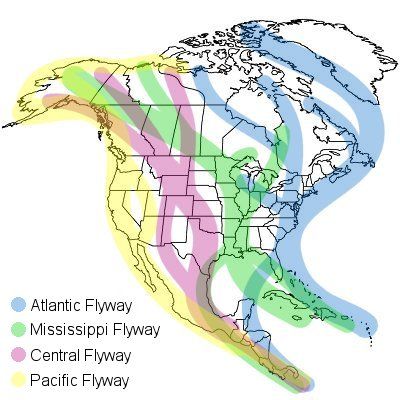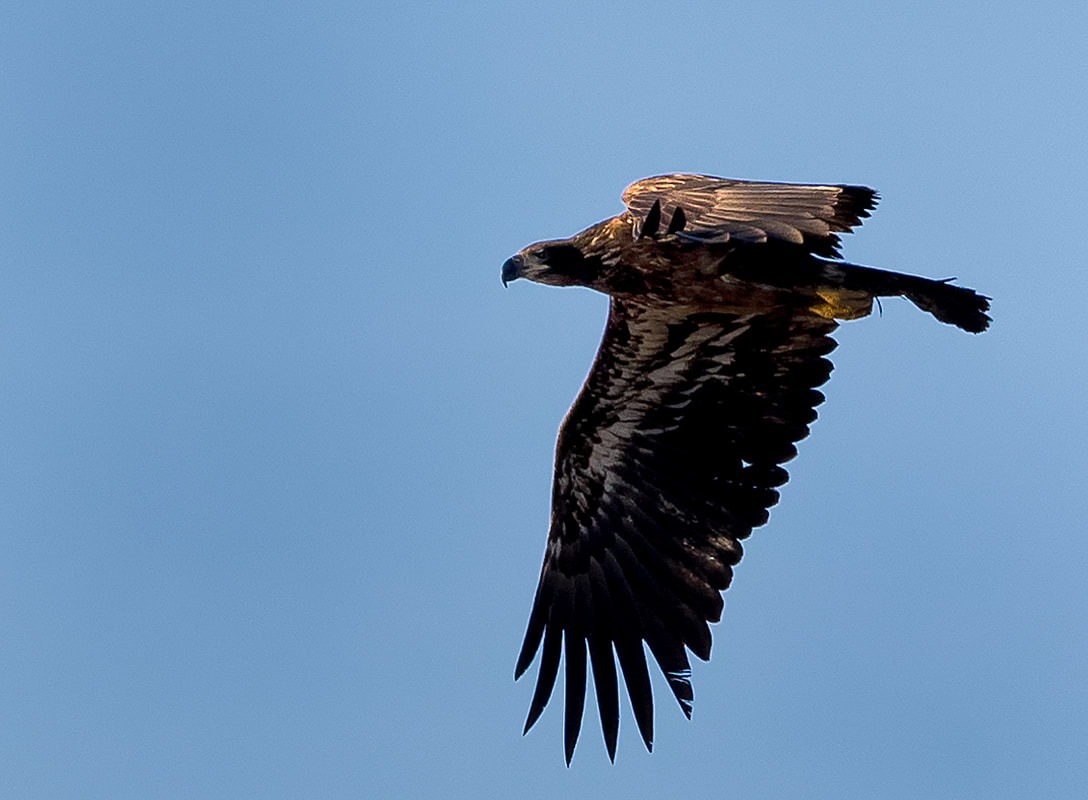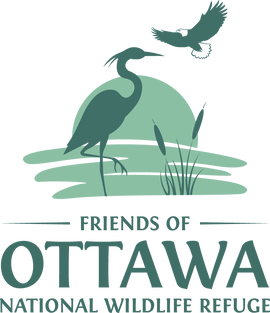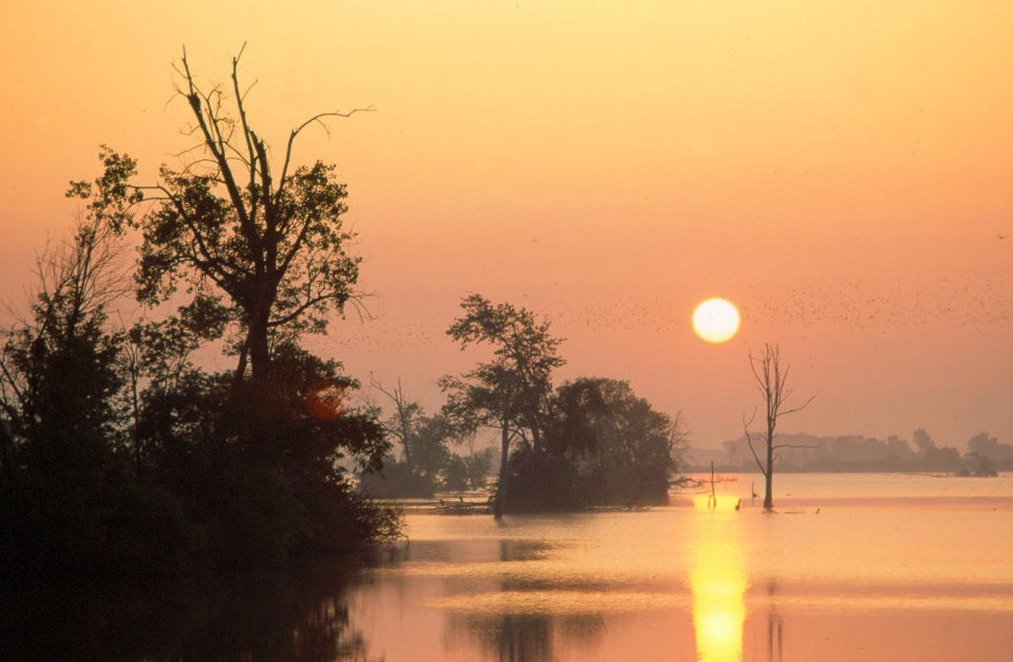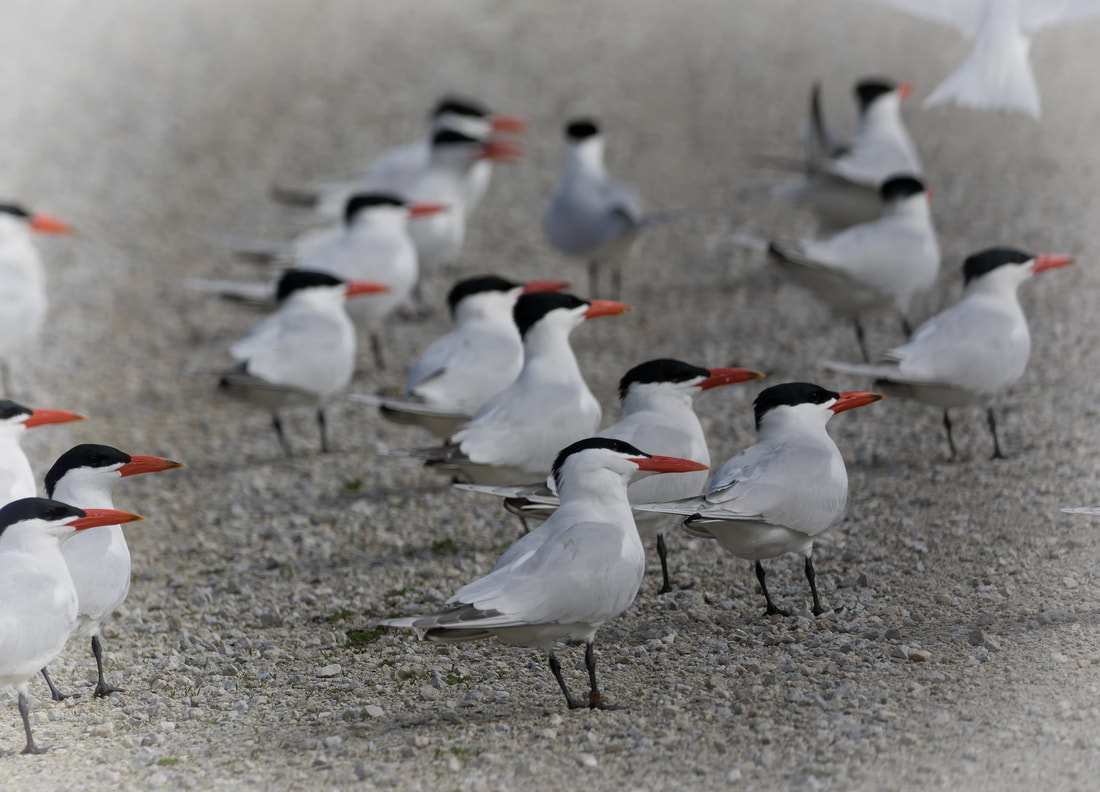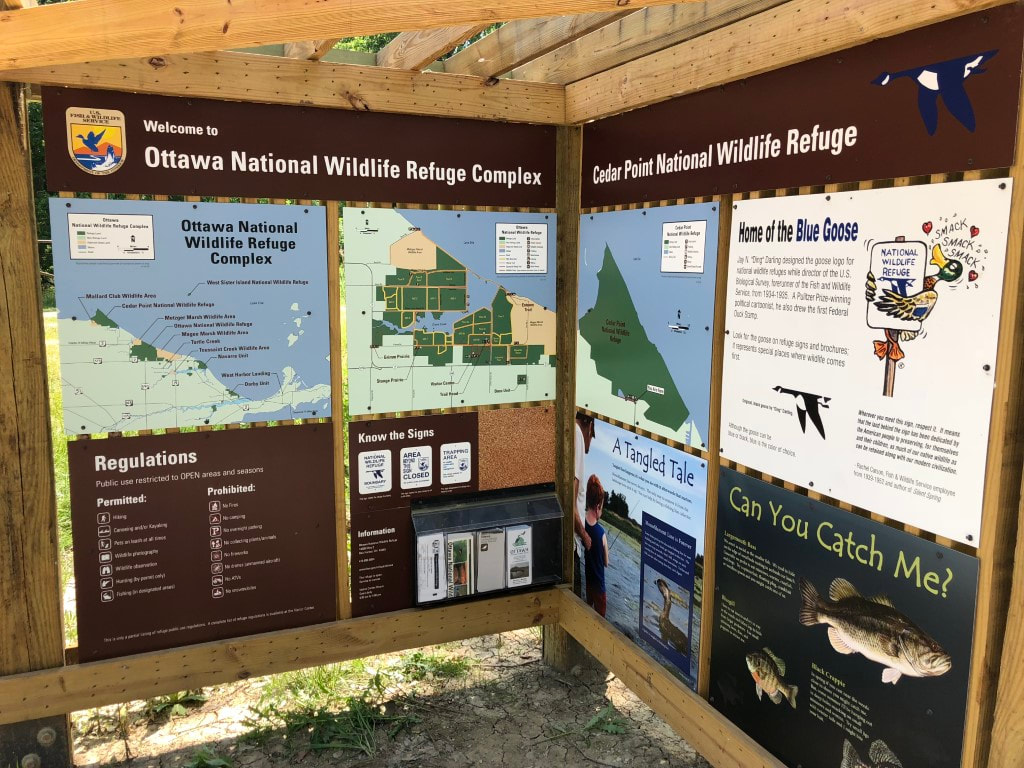|
Favorite Spring Birding Spots at Ottawa Refuge
Since Ottawa National Wildlife Refuge hosts birds from both the Atlantic and Mississippi flyways during migration, spring is an exciting time of the year. During your visit be sure to check out some of our favorite birding and wildlife viewing spots on the complex! 1. Crane Creek Estuary Trail: great views of migrating waterfowl, songbirds, and wading birds as you explore lake shore, beach, estuary, shrub/scrub, and wetland habitats. You can easily turn the half mile loop trail into a longer hike by following the trail around Pool 1. This will provide a more open view of the estuary and additional opportunities for migrating warblers in the cottonwoods and willows. Blackburnian, black-throated blue, black-throated green, palm, pine, northern parula and yellow warblers frequent the area in April and May. You might even spot a cerulean or Kirtland's here. Sora or gallinules wouldn't be out of the question. 2. Cedar Point National Wildlife Refuge: Explore a remote refuge with a small group of 15 and no one else in sight. Since Cedar Point is closed to the public, special bus tours will take you to explore with a guide. Warblers of all kinds line the trees along the dikes. Sandhill cranes typically nest here as well. (The guides tend to fight over these trips because They. Are. Outstanding!) Check the calendar of events for details. Reservations are required but the tours are free. 3. Boss Unit: This unit was restored from agriculture in 2012 and features an ADA accessible observation deck. The adjacent woods holds an eagle nest so eagle activity is frequent. In the spring you will likely spot all sorts of migrating waterfowl including pintail, northern shovelers, and gadwall. Depending on lake levels, this is also a good place to check for shorebirds if mudflats are exposed. A kestrel box is located here and has been active in the past. 4. MS-8A: Part of the main hiking trails, MS-8A has had some unique visitors including ibis and yellow-crowned night heron in the past. This relatively secluded section of the hiking trails features wet woods, wetlands, and edge habitats. It's always worth a check - not only for birds but also because river otters are sometimes spotted in the canals! 5. The South Woods: If the wind is pushing hard off of the lake, the South Woods is a great place to go and look for migrating warblers in the spring. Located directly behind the Visitor Center, the raised boardwalk makes parts of the woods very accessible. The South Woods also features a Great Horned Owl nest. Free bird walks with a knowledgeable guide are held during the Biggest Week in American Birding. 6. Stange Prairie: Sparrows, meadowlarks, and waterfowl can be spotted in Stange Prairie. This spot features an accessible observation deck providing you with views of the nearby prairie, woods, and wetland habitats. Bring the scope and stay awhile. 7. Turtle Creek Island Unit: This is one of the newer additions to Ottawa National Wildlife Refuge. A paddle launch located right along Turtle Creek, this spot is great for bald eagles (sometimes lots!), herons, and waterfowl. 8. Ottawa Wildlife Drive: Take the 7-10 mile drive through parts of Ottawa National Wildlife Refuge that are typically closed to the public. You can take your own vehicle back on the gravel trail to view wooded habitats, prairies, and wetlands offering all sorts of great birds. This is a great way for all ages and abilities to explore Ottawa National Wildlife Refuge. Check the calendar of events for dates and times the Wildlife Drive is open. 9. Navarre Marsh: Located in the shadow of the Davis Besse power plant, this marsh is closed to the public though our free tours offer incredible looks at migrating warblers. Check the event calendar for tour dates and times. Registration is required. 10. Middle Toussaint Unit: Featuring a prairie, and wooded habitats along the Toussaint Creek, this is a great place to look for kingfishers, migrating songbirds, sparrows, meadowlarks, herons, egrets, and the occasional pheasant. 11. Woodies Roost: This loop trail is a lovely, secluded walk for anyone looking to step away from the crowds. Views of wetlands and woods provide opportunities for warblers, thrushes, indigo buntings, swallows, and waterfowl - particularly wood ducks. 12. Grimm Prairie: On the western edge of the main complex you will find a lovely prairie trail. Sit and listen at the parking area or walk back through the grasses to listen for sparrows, meadowlarks, bobolinks and dickcissels with potential for golden plovers if conditions are right. Keep an eye to the sky for migrating hawks and resident Sandhill cranes. 13. West Harbor Landing: Located east of Port Clinton on Catawba Island, West Harbor Landing connects with the Lake Erie Water Trail offering up close views of marsh birds as you paddle along. In early spring, this is a great place to check for migrating waterfowl including large rafts of scaup and canvasbacks as well as pelicans, gulls, and eagles. 14. Turkey Run Unit: When not in use for hunting, this is a great space to check for red headed woodpeckers, turkeys, and some migrating songbirds. 15. West Sister Island National Wildlife Refuge: heron/egret rookery located 9 miles off shore of the main complex. Check the calendar of events for ferry tours which typically happen in spring and fall. |
|
Friends of Ottawa NWR
14000 W. State Route 2 Oak Harbor, OH 43449 |
Visitor Center open Wednesday-Sunday 10am-4pm.

